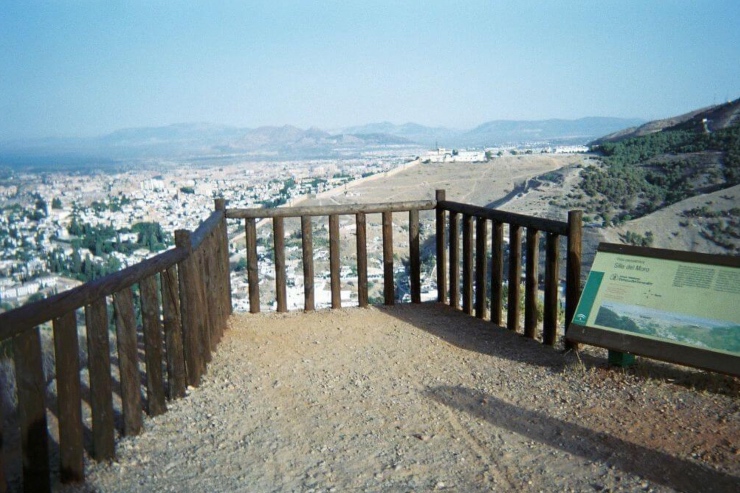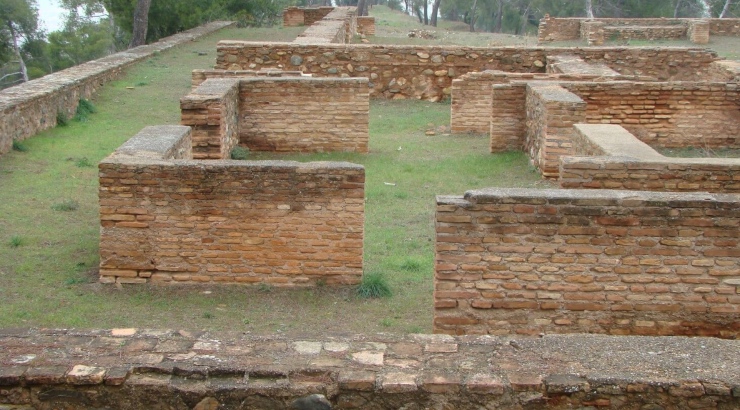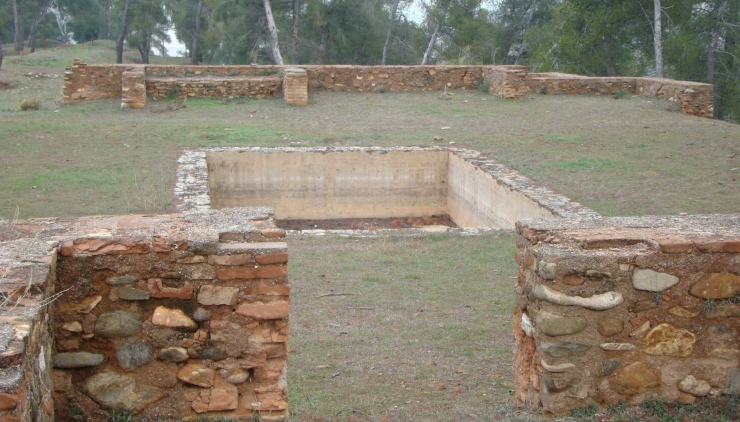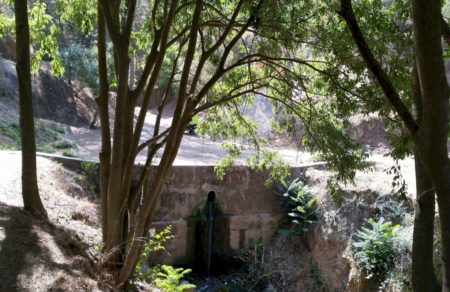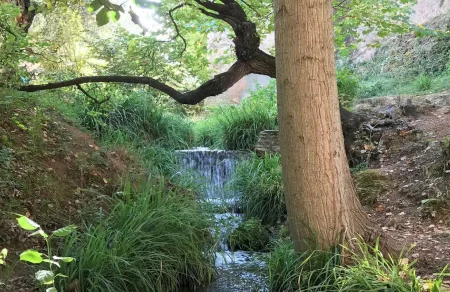A walk through Cerro del Sol, up above the Sabika, which dominates the upper part of the Generalife, offers a different vantage point for beholding the Alhambra and the city of Granada Tours. In Muslim times, the whole area was filled with palaces, almunias (a type of Andalusian rural building) for the court’s summer recreation, defensive fortresses and civil constructions for improving urbanism in the area.
Known as the Palacio de los Alixares, today it is integrated into the San José Cemetery. Although less known, today we’re going to walk around the area of Silla del Moro also called the Castillo de Santa Elena and the Palacio de Dar al-Arusa.
At Nasrid times, around the 13th century, on the northern face of the Cerro del Sol and presiding over the Darro valley and Granada, a defensive bastion was built although its Muslim name is unknown until now. As a part of the defensive structure of the Generalife, its purpose was to control the distribution of water from the Acequia Real (royal irrigation canal) to the surrounding palaces and gardens. It also defended the small palaces in the surrounding area.
In Christian times, around the 17th century, it was called Castillo de Santa Elena, due to its consecration as a church. Starting in the 19th century, Granada residents referred to it as Silla del Moro, a name that still retains today. Over time, it deteriorated due to its disuse. At the start of the 20th century, a number of harmful events, such as the intention to build a restaurant destroyed any possible decorative remains and inscriptions.
At the end of the 20th century, the Patronato de la Alhambra took charge of managing it and began restoration work which was completed in 2011. Today, tourists wishing to see an unparalleled view of Granada (Things to do in Granada) and the Alhambra can visit it for free on Sundays.
From the Silla del Moro to Dar al-Arusa
Below the building, there are some underground passages and tunnels as well as the remnants of a staircase. A short distance above the Silla de Moro, you find yourself in Palacio de Dar al-Arusa, also known as Casa de la Novia and Casa de la Desposada. They were some small palaces that were also from the Nasrid period, from which only some of the beginnings of some walls and structures still remain, such as the pool in the central courtyard. Around that courtyard different rooms are laid out such as in traditional Nasrid homes, and even the remnants of the old pavement can be seen.
The water system has been well preserved, with parts of a well, waterwheel and even a marble and ceramic pool being noted, which formed part of a hammam (Arabic bathhouse).
A great way to spend a a day in Granada, which can be done along with one of our walks. After walking around Cerro del Sol, head over to the other side of the Darro valley and visit the Albayzín and Sacromonte as a part of our night walk. Feel like joining? Get to know our Albaicin and Sacromonte guided tour.



